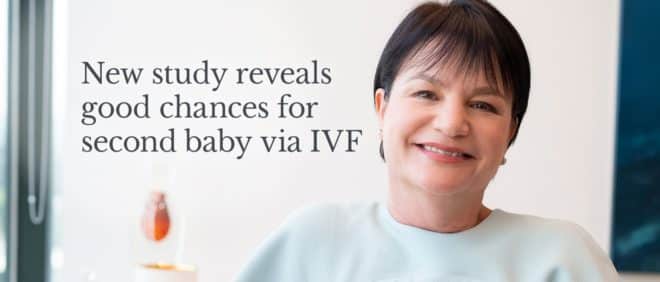
Women who used IVF to conceive their first child have a good chance of having a second child the same way, according to a new study.
The study, by researchers from the University of New South Wales (UNSW), is the first to look at the chances of women having more than one IVF-conceived baby, which may be helpful in counselling patients planning their families.
Recently published in the journal Human Reproduction, the study looked at 35,290 women who received IVF treatment using their own eggs and successfully gave birth between January 2009 and December 2013, in 90 clinics throughout Australia and New Zealand. The study followed the participating women for another two years until December 2015, providing two to seven years of treatment follow-up. Among these mothers, 15,325 women (43 percent) with a median age of 36 years decided to repeat treatment in order to have a second child. From those trying for a second IVF child, 73 per cent had frozen embryos available from their first IVF cycles.
The study found that after a live birth using IVF, a woman’s chance of a second ART baby is between 51 percent and 88 percent after six cycles. Whether the cycle uses a frozen embryo (from a previous cycle) or a newly stimulated cycle impacts the success rate.
The chance of a baby after just one cycle is 43.4 per cent (using frozen embryo) or 31.3 per cent (using a fresh embryo).
The study also confirms that success rates declined with women’s age. For women aged 40 to 44, live birth rates after three cycles of treatment ranged between 38 to 55 per cent when using a frozen embryo, and 20 to 25 per cent when starting with fresh embryos from a new stimulation cycle. Reported factors positively affecting the chances for a successful second pregnancy included: requiring only one cycle; a single embryo transfer for the first IVF-conceived baby; and infertility originating in factors affecting the male partner.
Study co-author, City Fertility Sydney CBD Clinical Director Dr Devora Lieberman, said having these research results is immensely helpful in being able to counsel patients, however she advised every couple is different.
“The statistics are useful population estimates, but there are many individual factors that affect a woman’s chance of ART success including duration and cause of infertility. I discuss ideal family size with all my patients from the first consultation, and talk about IVF as a course of treatment over time, rather than each cycle as a one-off event. Having this data allows for a more informed conversation, ” Dr Lieberman said.
The study was published last week in the journal of Human Reproduction.
Read more about the study at the SMH or at UNSW.
Request an appointment with one of our specialists.Make your appointment







